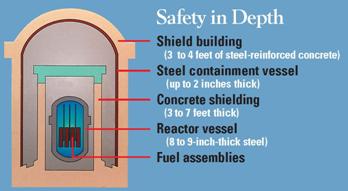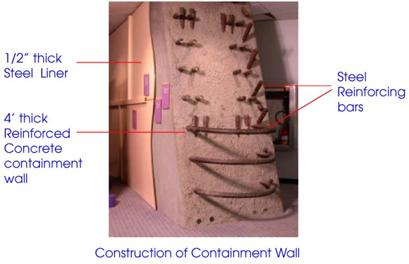Our nuclear power plants are designed and built to operate safely in all kinds of conditions. Our plants have been specifically built to withstand natural disasters such as hurricanes, tornadoes, earthquakes, flooding and tidal surges.

Our nuclear plants and containment buildings have steel-reinforced concrete outer walls that are at least three feet thick as well as multiple additional concrete barriers inside. The reactor vessel itself is built of steel. Multiple safety systems with back-ups are in place for additional protection.

Built-in safety features
Redundant safety systems built into the plant design include:
- Four diesel generators to power plant cooling systems that are protected by concrete and steel-reinforced buildings. Only one generator is needed to fully power the plant's critical systems.
- Additional reactor cooling system powered by steam generated by the plant itself.
- Back-up batteries for critical safety systems are stored on-site.
- External cooling options (i.e. injection and fire pumps) are pre-staged onsite; can use ocean water for cooling.
- Safety and cooling systems can be powered for seven days without requiring any offsite power or additional fuel.
- For one full week out of every six weeks, plant operators must prove their ability to safely operate the plant in a variety of worst-case scenarios that include earthquakes, severe storms, flooding, loss-of-power, and loss of reactor core cooling.
Fast facts
- FPL's Turkey Point nuclear power plant withstood the direct impact of Category 5 Hurricane Andrew in 1992 with no damage to its nuclear systems.
- FPL's St. Lucie nuclear power plant safely withstood Category 3 Hurricane Jeanne and Category 2 Hurricane Frances in rapid succession in 2004 with no damage to its nuclear systems.
- The Electric Power Research Institute (EPRI) conducted a state-of-the-art computer modeling study on the impact of a Boeing 767 crash, and concluded that typical nuclear plant containment structures -- as well as used-fuel storage pools and steel and concrete fuel-storage containers -- would withstand the impact.